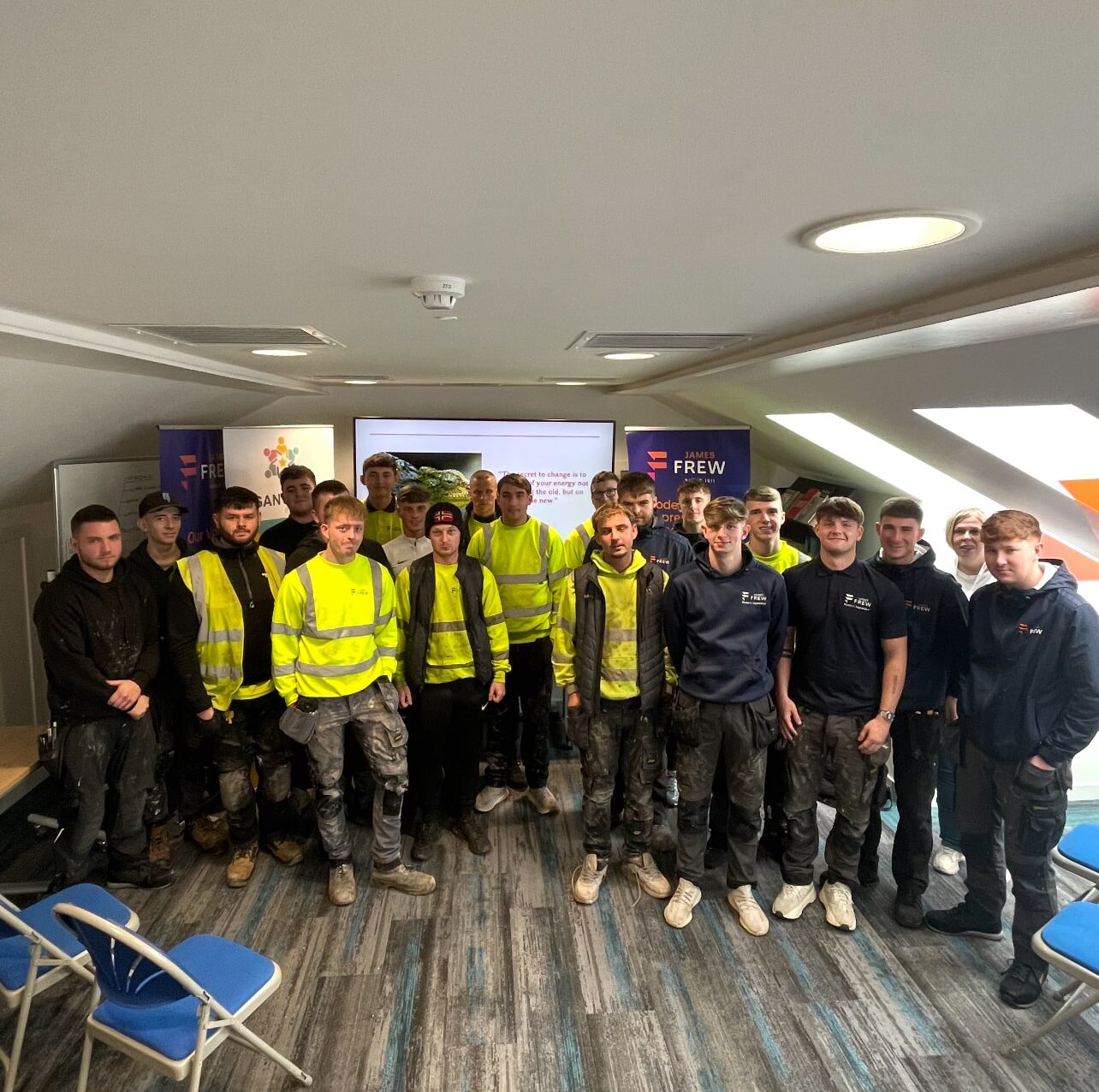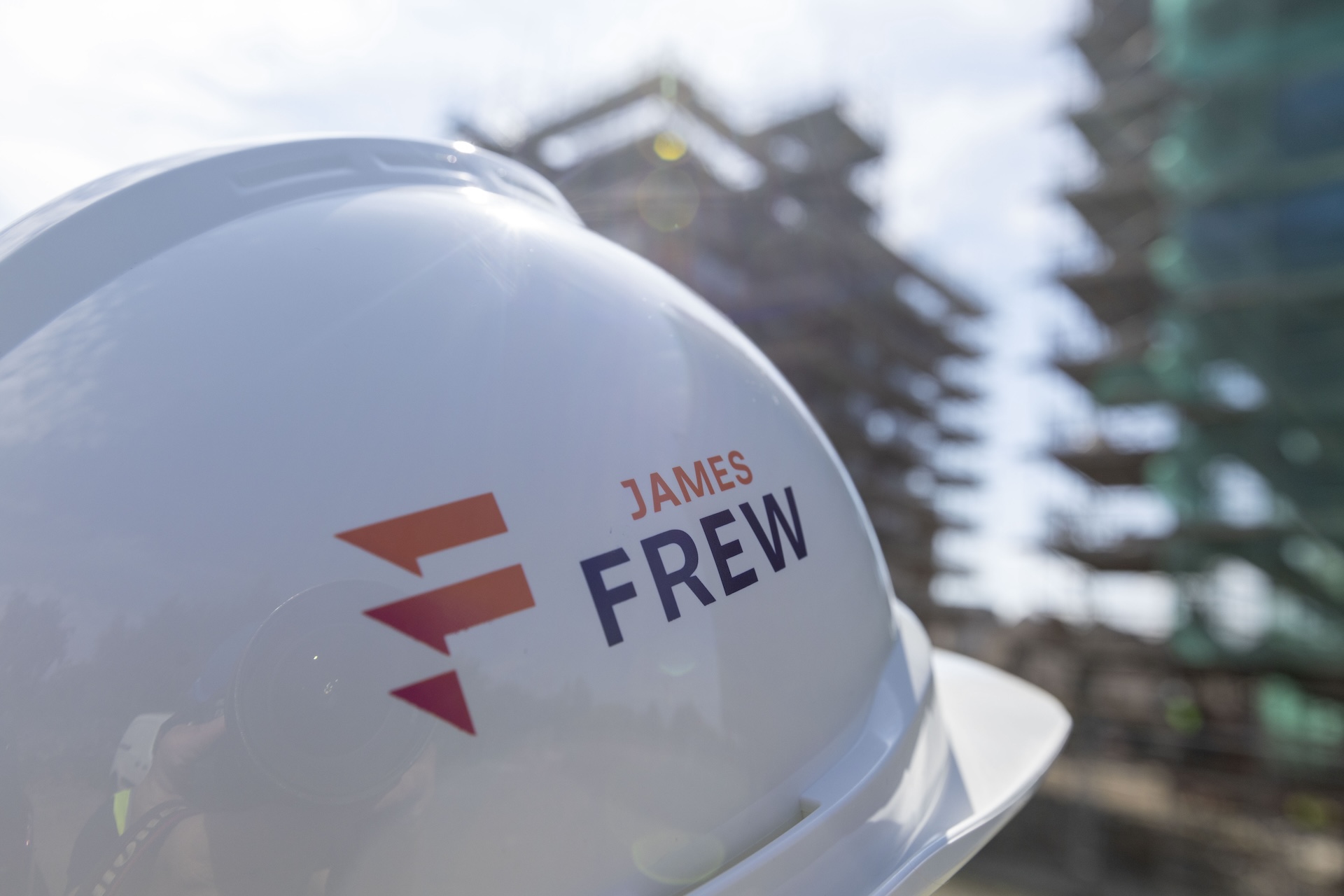There’s nothing worse than switching on the heating and discovering one of your radiators is stone cold, especially on a freezing morning in Scotland. If you have a cold radiator that isn’t warming up, don’t panic. We’re here to help.
At James Frew, we’ve been solving radiator problems in Scottish homes for over 100 years. From Ayrshire to Glasgow and beyond, our engineers have seen it all, so we’ve written this guide to help you understand the most common reasons why your radiator’s not working properly, plus what you can do before calling out an expert.
Common Signs That Something’s Not Right
Your radiator might:
- Stay cold even when the heating is on
- Be warm at the bottom but cold at the top
- Heat unevenly or make funny noises
- Only work in certain rooms
Whether it’s one radiator or multiple radiators, the solution could be simple, or it might require professional support. Let’s start with the basics.
One Radiator Not Heating Up? Here’s What To Try
1. Check That Both Radiator Valves Are Fully Open
It may sound basic, but you’d be surprised how often a radiator is cold simply because one of its valves has been accidentally turned off. This can happen during cleaning, redecorating, or when children or pets brush past the valve without you noticing.
Your radiator has two valves:
- Thermostatic Radiator Valve (TRV): This is the valve with numbered settings (usually 1–5 or a snowflake symbol for frost protection). It controls how much hot water enters the radiator based on the room temperature. If it’s turned down low or completely off, your radiator might not receive any hot water.
- Lockshield Valve: This sits on the opposite side of the radiator. It doesn’t have numbers and is usually capped. It controls how much water flows out of the radiator and is typically adjusted during central heating system balancing. If it’s closed too tightly, the radiator might only partially heat, or not at all.
What to do:
- Turn the TRV up to its highest setting (usually 5).
- Carefully remove the plastic cap from the lockshield valve, if present.
- Use an adjustable spanner or pliers to open the lockshield valve slightly – about a quarter to one full turn clockwise (do not open fully unless advised, as it may unbalance the entire system).
Once both valves are open, wait a few minutes and see if the radiator begins to heat up and starts to function properly. If not, carry on to the next step.
2. Free Up A Stuck TRV (Thermostatic Radiator Valve)
TRVs can seize up, particularly after months of inactivity during warmer months. When stuck in the closed position, no hot water will be able to enter the radiator, even if the valve appears to be “on.”
Here’s how to check and free a stuck valve:
- Turn off your heating to avoid hot water suddenly flowing when the valve frees up.
- Remove the thermostatic valve head by unscrewing it (you may need a screwdriver depending on the model).
- Inspect the small raised pin underneath the TRV head.
- This pin controls the valve mechanism. The pin should move up and down freely with a bit of pressure. Gently press the pin down using your thumb or a blunt object like the handle of a spoon.
- If it doesn’t spring back up, it’s likely stuck. Try easing it up and down gently with your fingers or a pair of pliers. Apply silicone lubricant if needed, but don’t force it. Damaging the pin could cause leaks.
- Reassemble the TRV and turn the heating back on. If the radiator still doesn’t heat, the TRV may need to be replaced.
If you’re not confident doing this yourself, or if the valve remains stuck, our team at James Frew is happy to help. TRV replacements are quick and affordable when caught early.
3. Bleed The Radiator To Release Trapped Air
If your radiator is hot at the bottom but cold at the top, there’s a good chance there are air pockets trapped inside. Air rises and blocks the flow of hot water, leaving your radiator unable to warm the full panel.
What you’ll need:
- Radiator bleed key (or a flathead screwdriver, depending on the valve type)
- An old cloth or towel to catch drips
- A jug or small container to collect water
Steps to bleed your radiator:
- Turn off your heating and wait until the radiator has fully cooled. This prevents water from spraying out and protects your boiler pressure.
- Locate the bleed screw (a small square or slotted screw at the top of the radiator, usually on one end).
- Place your cloth under the valve and insert the bleed key.
- Turn the radiator key anti-clockwise slowly (about a quarter turn). You should hear a hissing sound as the trapped air escapes.
- Wait for a steady stream of water – this means the trapped air in the system is gone.
- Tighten the valve again and check for leaks.
- Switch the heating back on and check whether the whole radiator heats up evenly from top to bottom.
Important: After bleeding, always check your boiler’s pressure gauge. If it’s dropped below the recommended level (usually around 1.0–1.5 bar), you may need to top it up using the filling loop. Don’t know how? Give us a call – we can walk you through it or pop out and handle it for you.
Radiator Still Not Heating? Check For Sludge Or Blockages
If the radiator is warm at the top but cold at the bottom, sludge may have built up over time. This is common, especially if you have an old radiator, and can seriously reduce efficiency.
Sludge is a mix of rust, dirt and debris that sinks to the bottom of the radiator, preventing hot water from circulating properly.
Signs of sludge:
- Uneven heating (hot top, cold bottom)
- Dirty water when bleeding
- Radiators making gurgling or bubbling noises
Solution: A professional power flush may be needed. This high-pressure cleaning service removes sludge and restores system performance. At James Frew, we offer power flushing as part of our heating maintenance services. All radiators cold? Check these system-wide issues.
If none of your radiators are warming up, don’t panic. It’s usually a sign of an issue somewhere within your home’s central heating system, rather than a full breakdown.
1. Check Your Boiler Pressure
Low boiler pressure is one of the most common reasons for a complete heating outage. Most modern heating systems (especially combi boilers) require water pressure to stay within a certain range to work effectively. If it drops too low, your boiler may shut down as a safety precaution, and that means no heat for your radiators.
Here’s how to check and top up your boiler pressure:
- Find the pressure gauge: It’s usually on the front of your boiler. The needle should sit between 1.0 and 1.5 bar when the system is cold.
- If it’s below 1 bar: The pressure is too low. You’ll need to top it up using the boiler’s filling loop.
To safely increase the pressure:
- Locate the filling loop (a small braided hose, typically underneath the boiler).
- Slowly open both valves—you should hear water entering the system.
- Keep an eye on the pressure gauge. When it reaches 1.2–1.5 bar, close both valves firmly.
- Restart the boiler and check if the radiators start heating.
Top tip: Never fill too fast or over-pressurise – going above 2 bar can trigger a fault code. And if you’re not confident? Give James Frew a call. We’ll make sure your system’s safe, topped up and raring to go.
2. Check Your Thermostat And Heating Controls
Sometimes the issue is simpler than it seems. Your thermostat or programmer may just not be telling your boiler to turn on.
Things to double-check:
- Thermostat setting: Is it set too low? Try increasing it to 21°C or more and listen for a ‘click’ that signals it’s sending heat demand to the boiler.
- Heating schedule: Has the heating been scheduled to OFF? If it’s outside the programmed hours, your system won’t fire up.
- Recent power cut? If your timer or control panel reset, the heating may have reverted to factory settings. This is a common hiccup we see after power outages.
Try switching your thermostat to ‘manual’ or ‘constant’ mode temporarily to test whether your heating system kicks in.
Still no luck? It might be time to move on to mechanical faults…
3. Faulty Diverter Valve (Common In Combi Boilers)
If you have hot water but your radiators stay cold, it’s a strong sign that your diverter valve might be stuck. This component controls where the hot water from your boiler goes – either to your taps or your central heating system.
In combi boilers, the diverter valve prioritises hot water on demand. But if it gets jammed or stuck in “hot water mode,” the boiler won’t be able to send heat to your radiators, even if the rest of the system is working perfectly.
Signs of a stuck diverter valve:
- You have piping hot water at the taps, but stone-cold radiators.
- The boiler fires up for hot water, but not when the thermostat calls for heating.
- You hear your boiler running, but no heat reaches the radiators.
Unfortunately, this is not a DIY job. A faulty diverter valve will need to be inspected and replaced by a qualified Gas Safe engineer. At James Frew, we deal with this issue all the time – it’s one of the most common call-outs for combi boiler users in winter.
Heating Uneven Across The House? You May Need To Balance Your System
If all the radiators in your home aren’t heating up at the same speed, or if you’re noticing cold radiators downstairs while the upstairs ones are toasty, it’s usually a sign that your heating system needs balancing radiators.
Balancing your radiators means adjusting the flow of hot water so that every radiator receives just the right amount, helping your whole home heat up evenly. It’s a common issue, especially in larger or older properties where some radiators are much closer to the boiler than others.
At James Frew, we often help homeowners fix this and enjoy warmer, more efficient homes without needing major repairs.
How To Balance Your Radiators (Step-By-Step)
1. Turn off the heating system and let everything cool down. You’ll need to start with a level playing field. Make sure your heating is switched off and the radiators have cooled fully before you begin adjusting any valves.
2. Open all your thermostatic radiator valves (TRVs) fully. Turn every TRV to the maximum setting. This ensures all radiators are demanding as much heat as possible when the system restarts.
3. Switch the heating back on and observe which radiators heat up first. The radiators closest to your boiler (or those with the least resistance) will naturally heat up the quickest. Take note of the order.
4. Adjust the lockshield valves on the fastest-heating radiators. The lockshield valve is the non-thermostatic valve on each radiator (usually hidden under a plastic cap).
- Use an adjustable spanner to turn it slightly clockwise to reduce the flow to the quickest-heating radiators.
- By restricting flow here, you ‘push’ more hot water towards the slower-heating radiators further away.
5. Repeat the process and fine-tune. After each adjustment, let the system run and check if the radiators are heating more evenly. It can take a few rounds of tweaking to get it right, but the payoff is a home that feels consistently warm in every room.
Top tip from our professional heating engineers: Balance from upstairs down. Radiators on upper floors often heat quicker due to hot water rising naturally, so adjusting those first can make balancing the rest of the system smoother.
Why it’s worth doing:
- Achieves consistent room temperatures throughout your home
- Reduces strain on your boiler (making it last longer)
- Cuts energy waste and helps lower your heating bills
When to Call the Experts
If you’ve tried the simple fixes and your radiators remain cold, it’s time to call a Gas Safe engineer. You should also get professional assistance if:
- You notice a radiator leak or signs of corrosion
- You’ve already tried bleeding and balancing
- Your boiler is over 10 years old or due for a service
- You want to upgrade to a more efficient system
At James Frew, we make it easy. We offer:
- Same-day emergency heating support
- Trusted Gas Safe registered engineers
- Power flushing and system cleaning
- Radiator and TRV replacement
- New A-rated boiler installations with 0% finance
Why Choose James Frew?
We’re not just another heating company. We’ve been part of the local community for over a century — helping homeowners like you stay warm, safe and comfortable.
- Over 4.6 stars on Google
- Gas Safe accredited
- Worcester Bosch partner
- Flexible finance options, including 0% interest
- Trusted across Scotland for over 100 years
Stay Warm This Winter
If your radiator isn’t heating up, don’t suffer in silence. Try the tips above, and if you’re still unsure, we’re here to help with any radiator issues and keep your systems working correctly.
Call us on 01294 468113 or get your fast, fixed-price boiler quote online in 30 seconds.


